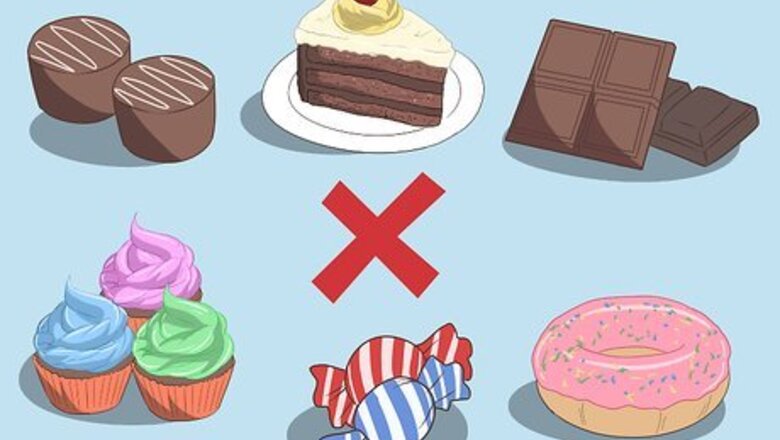
views
Making Dietary Changes
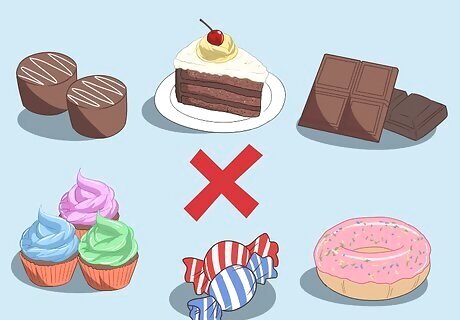
Cut sweets from your diet. Added and refined sugars may cause an elevation in triglycerides, so one of the fastest ways to lower your triglycerides may be to cut down on your sugar intake. This is because sugars are often unneeded calories that are converted to triglycerides (a form of fat) for storage in the body. Limit your added sugars to less than 5 to 10 percent of your calories. For women, this means that sugars can take 100 to 200 calories per day. For men, this means that sugars can take 150 to 250 calories per day. Avoid simple sugars found in candy, desserts, soda, and juice.
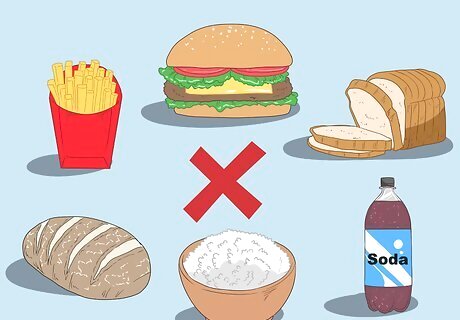
Reduce your refined carbohydrates. White rice and baked goods made with refined white flour or semolina can cause elevated triglycerides in some individuals. If your doctor suspects that this might be an issue for you, reducing your carbohydrates can have a quick impact on your triglycerides. Instead of eating foods made with refined white flour, choose breads and pastas that are made from whole grains. Diminish your overall intake of carbohydrates, and consume more protein in your diet instead. Proteins have a lower "glycemic index" than carbohydrates, meaning that they are absorbed more slowly into the bloodstream. This, in turn, is helpful to lower blood sugars as well as to lower blood "lipid" levels (including triglycerides). Healthy fats are also a great dietary addition as these help to stabilize blood sugar and can in turn help to lower triglycerides.
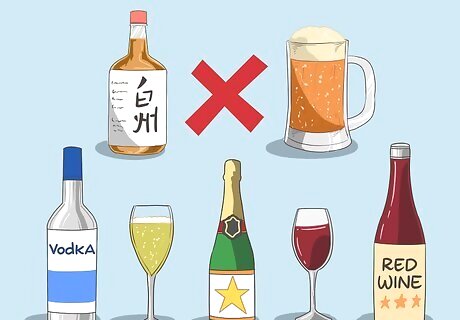
Eliminate alcohol. Alcohol can increase triglycerides, especially in those who are more sensitive to it. It is strongly recommended that you eliminate alcohol from your diet while you are trying to lower your triglycerides. After your triglycerides have returned to an acceptable level, you may gradually re-introduce alcohol back into your diet. However, avoid drinking too much or too often, since having too much may cause your levels to jump back up again. Men should have no more than two drinks per day and women should have no more than one drink per day. A drink is defined as 12 ounces of beer, 5 ounces of wine, or 1.5 ounces of liquor.
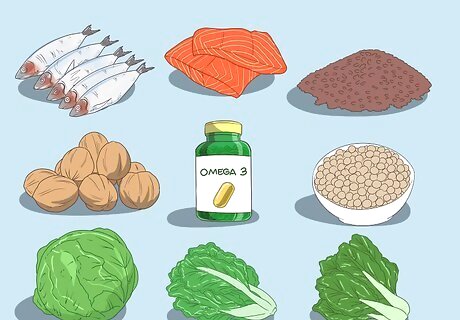
Eat more omega-3 fatty acids. Omega-3 fatty acids are considered to be "good" fats, and the regular consumption of omega-3s can help your body develop lower levels of triglycerides. Eat roughly two servings of fatty fish per week. If you do so consistently, you may see a change in your triglyceride levels. Fatty fish rich in omega-3s include salmon, mackerel, sardines, tuna, and trout. Other sources of omega-3s include ground flax seed, flaxseed oil, soy, legumes, walnuts, and dark, leafy green vegetables. Mix these additional sources into your diet on a daily basis. A good-quality omega 3 supplement can be extremely beneficial as these help with overall omega-3/omega-6 ratio.
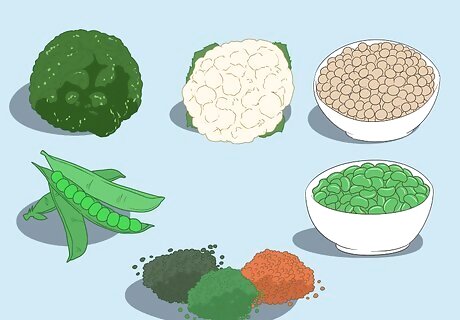
Consume plant-based foods. Particularly if you select the protein in your diet from plant-based sources (rather than from red meat), you may find that your cholesterol and triglyceride levels can be lowered significantly. Dried beans, peas, and soy are all plant-based products that are rich in protein. You can also consume chicken as a replacement for red meat, as this is a better alternative to moderate your triglyceride levels.
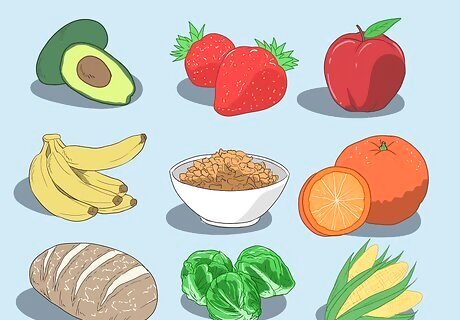
Get plenty of fiber. Fiber helps regulate the way that food is absorbed and passed through your body, and high-fiber foods can significantly lower both your triglycerides and cholesterol. Fiber combines with water in your intestine to form a gel-like matrix to which fats attach; this diminishes the percentage of fats (including triglycerides) that are absorbed into your body. An added bonus is that fiber maintains the health of your digestive tract in other ways too. To get more fiber in your diet, increase the amount of whole grains you eat. You should also eat more beans, fruits, and vegetables. Fiber also makes you feel full, which can prevent you from overeating. Drink more water when you increase your fiber. Otherwise, you may experience moderate to severe intestinal upset.
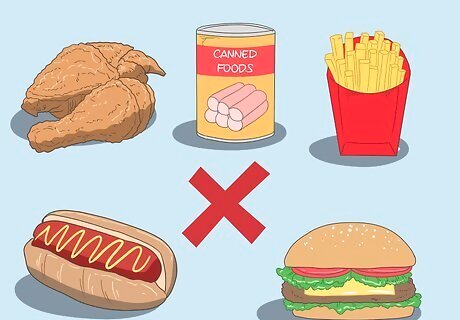
Monitor your fat intake. Saturated fats and trans fats can be especially harmful, and cutting as many as possible from your diet can greatly affect your triglycerides in a positive way. Packaged foods and fast foods are big culprits responsible for these "bad" fats. Animal products and anything made with hydrogenated vegetable oil may also be a problem, as well as shortening, lard, or margarine. Opt for mono- and poly-unsaturated fats, instead. Your body needs to take some fat in, but these sources are considered healthier and will not impact triglycerides as much. They include olive oil, canola oil, rice bran, walnut oil, and flaxseed oil.
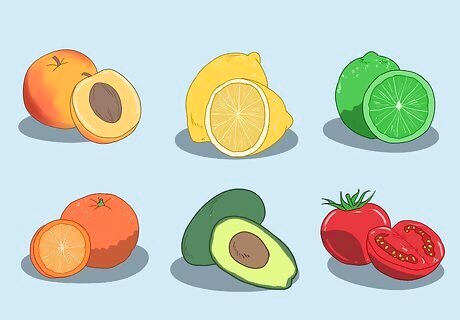
Limit fructose. Fructose is the sugar that is found naturally in most fruits, and is also present in honey and some forms of table sugar. Limiting fructose levels by having no more than three servings of fruit per day can help you lower your triglycerides faster. Fruits lower in fructose include apricots, citrus fruits, cantaloupe, strawberries, avocados, and tomatoes; if you are going to consume fruit, these are the preferable ones to choose. Fruits higher in fructose include mangoes, bananas, plantains, grapes, pears, apples, watermelon, pineapples, and blackberries; these are fruits to avoid, or at least limit in your diet.
Making Activity and Lifestyle Changes
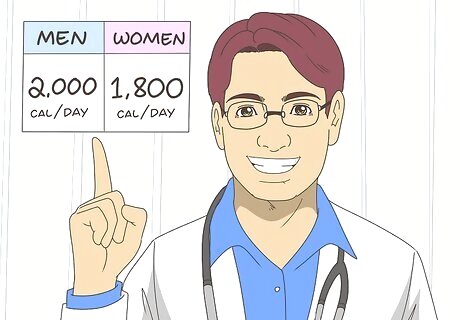
Regulate your caloric intake. Pay close attention to how many calories you consume in a day and see if you can cut back (consult your doctor to find a safe and achievable goal). This is especially useful if you are overweight or obese. Excess weight could be a source of elevated triglyceride levels. Most women should aim to consume 1,800 calories per day, while most men should aim for 2,000 calories per day (this may vary depending on activity level and other factors). If you are in graver need of losing weight or lowering your calories, your doctor may put you on special diet involving even fewer calories, but you should not put yourself on such a diet without approval from your doctor. Also avoid snacking late at night before you go to sleep.
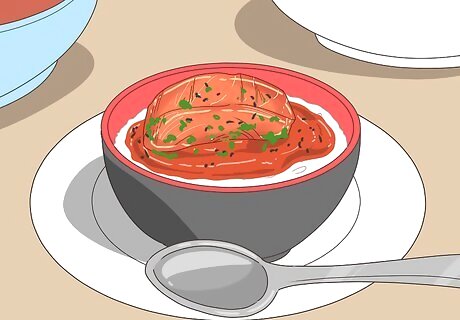
Eat smaller portions. Consuming smaller, more frequent meals is better than eating two or three large ones.
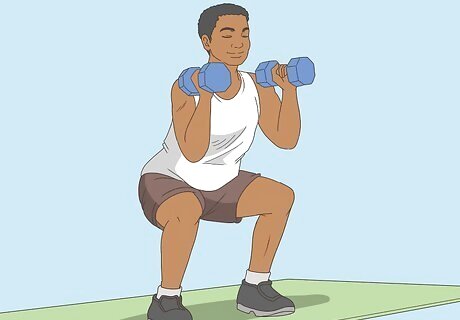
Exercise. Moderate exercise is an essential part of lowering both cholesterol and triglyceride levels. Resist the temptation to set a rigorous exercise regimen. You may think that starting out with a challenging exercise program will lower your triglycerides quicker, but this is a bad move in the long run. Starting with something too difficult increases the likelihood of you quitting the program sooner. Begin by introducing 10 minutes of exercise into your daily routine, adding a minute or two every week until you can comfortably reach 30 to 40 minutes per day. However, aim for at least 150 minutes per week. Add variety to your routine. Walk one day, bike another, and follow an exercise DVD or Youtube video on another day. Get creative. By introducing variety into your exercise program, you can keep things from getting boring. It may also help you to find a form of exercise you actually consider to be fun! Incorporate exercise into your routine. "This article helped me understand the importance of exercise. I didn't like walking at first, but after doing it for a few weeks my wife now walks with me. We discuss our plans for the day or just the sights on our walks. We walk between 2-3 miles a day, and it has really helped!" - Cynthia D. Make changes to your diet. "After reading this, I cut out alcohol and reduced my intake of meat, sugar, and salt. I began drinking turmeric tea with lemon and lots more water, which really helped lower my stress. This article really helped me quit alcohol." - Tiki S. Have a story our readers should hear? Share it with 1 billion+ annual wikiHow users. Tell us your story here.
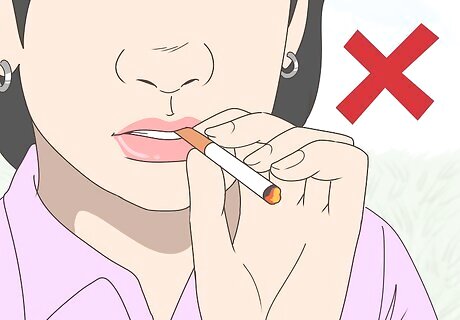
Quit smoking. Quitting smoking is an essential step in reducing one's risk of heart disease, and also in lowering triglyceride levels. Smoking contributes to several "cardiovascular risk factors," including increased blood clotting, damage to the arteries, and worse control of "lipid levels" (including triglycerides) in the blood. If you quit smoking it will dramatically improve multiple areas of your health. See if you can find a program in your area that helps people with the process of quitting. Or, visit your physician, who can also provide guidance and support.
Taking Prescription Medications
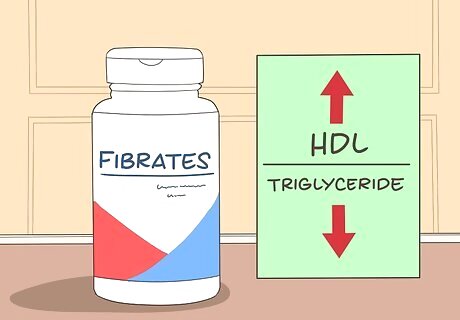
Take a fibrate. If your doctor has prescribed a fibrate, then this can help to lower your triglycerides. Common fibrates include gemfibrozil and fenofibrate. Fibrates are carboxylic acids, a type of organic acid made of carbon and oxygen. They are also amphipathic, meaning that they are drawn to both fats and water. These drugs increase HDL levels while decreasing triglyceride levels. They accomplish this by reducing the liver's production of a particle that carries triglycerides. Be aware that fibrates can cause digestive upset and liver irritation, along with gallstones. They are also dangerous to use with blood thinners and may cause muscle damage when used with statins.
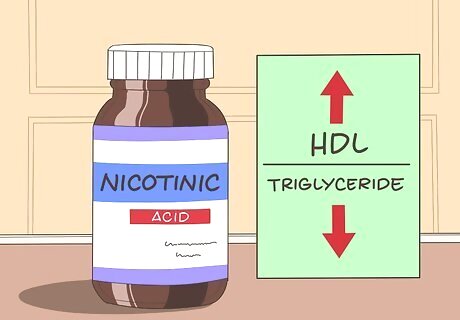
Try nicotinic acid. Your doctor may also prescribe nicotinic acid to lower your triglycerides. The most common nicotinic acid is niacin. Nicotinic acid is another carboxylic acid. Like fibrates, nicotinic acid reduces the liver's ability to produce triglyceride-carrying particles called VLDL, or very low density lipoproteins. Nicotinic acid raises HDL cholesterol ("good cholesterol") more than many other medications of this type. Consult your doctor prior to using this medication as it can interact with other medications and have dangerous side effects. Possible severe side effects include difficulty breathing, severe stomach pain, jaundice, and dizziness. Although these are uncommon, they are important to be aware of.
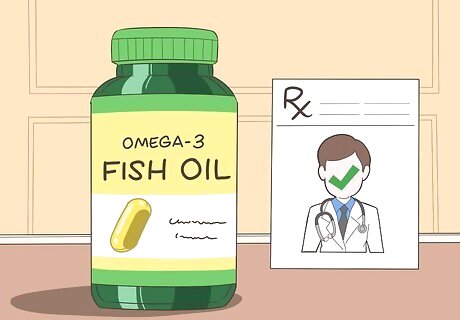
Find out about prescription omega-3s. Naturally consuming more omega-3 fatty acids can make a difference in triglyceride levels, but high doses of prescription omega-3 supplements can lower triglycerides even more effectively. Ask your doctor about a prescription omega-3 supplement. Prescription omega-3s usually come in the form of fish oil pills. Only take high doses of omega-3s under the instruction and care of a doctor, as they could interact with other medications. Too much omega-3 can severely thin out the blood and lower blood pressure. It can also lead to elevated levels of blood sugar and may impair liver function. Mental disorders can also be triggered.
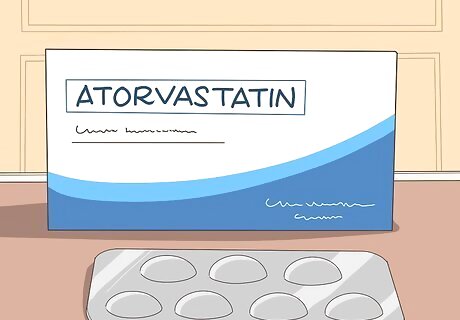
Learn about statins. The most commonly used statin is atorvastatin. Other statins include fluvastatin, lovastatin, pitavastatin, pravastatin, rosuvastatin, and simvastatin. Your doctor may prescribe one of these to help lower your triglycerides. These drugs lower cholesterol by blocking an enzyme known as HMG-CoA reductase. This enzyme has a key function in producing cholesterol. The main purpose of a statin is to reduce LDL cholesterol. It can also reduce triglycerides, but the drug tends to be less effective than many other types of medications prescribed for this purpose. Statin side effects are rare but severe. Muscle damage is the main side effect, especially when used in conjunction with a fibrate, but it can also cause liver problems and increase your risk of diabetes. Beware of symptoms of excess omega-3 intake. These may include oily skin/breakouts, cravings, greasy hair and overall feeling of sluggishness.


















Comments
0 comment